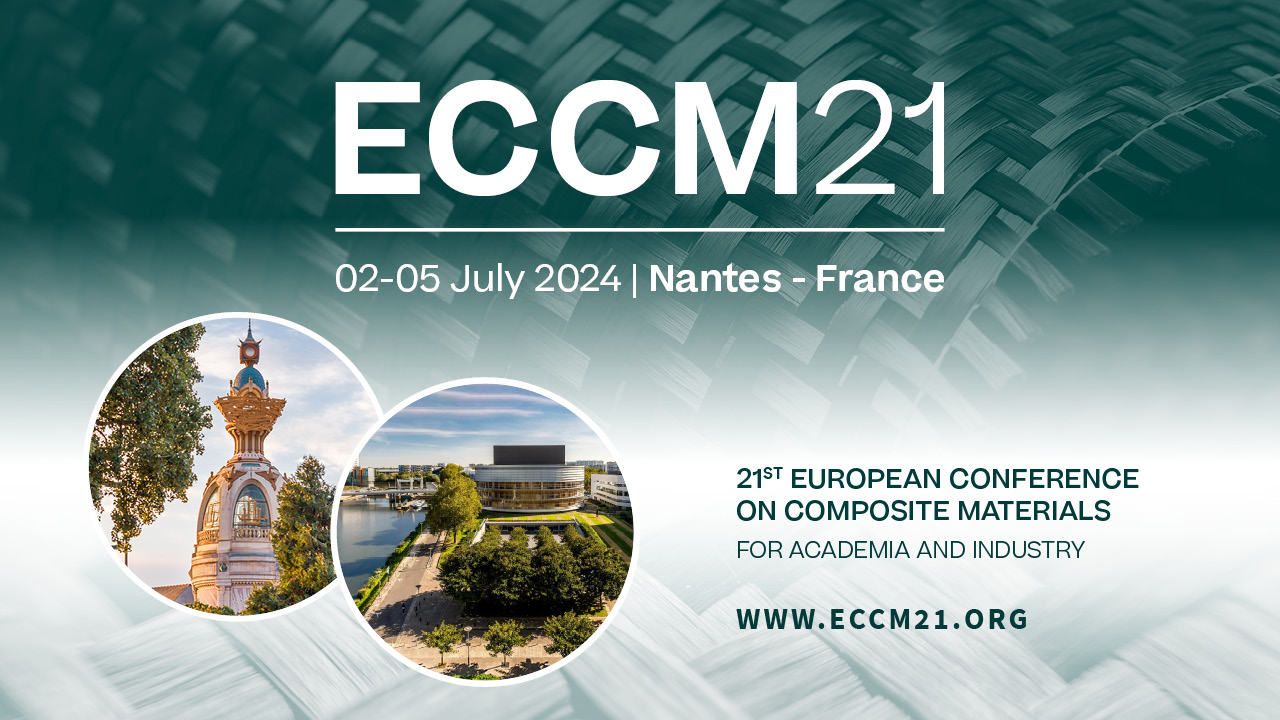Permeability of 3D printed porous media: towards the convergence of experimental and numerical results
Topic(s) : Special Sessions
Co-authors :
Paul BARAL (FRANCE), Nicolas MOULIN (FRANCE), Julien BRUCHON , Sylvain DRAPIER (FRANCE)Abstract :
Liquid resin infusion (LRI) is one of the most cost effective out-of-autoclave process for composite part manufacturing, ensuring a high fibre volume fraction. For effective control and optimization of this process, an accurate modelling of the resin flow based on preform permeability is required. However, despite the amount of experimental [1] and numerical studies [2] about permeability measurements, only few of them provide a reliable comparison of the results obtained on the same porous medium [3].
To bridge the existing gap between experimental and numerical permeability measurements, we propose to step back to controlled porous media with less variability than fibre-reinforced composites. Similar to Bodaghi et al. who adopted model structures for calibrating their permeability setup [4], we aim to extend this protocol with comparison between experimental results and fluid flow numerical simulations. Our study focuses on gyroid structures (see Fig. 1.b) which present several advantages: (1) the periodicity enables to simulate only one unit cell of the structure, (2) the geometry is tunable (allowing for variation in wall thickness, volume fraction, amplitude and frequency of the gyroid) and (3) it is achievable with additive manufacturing processes. A brief presentation of the numerical and experimental methodologies is given and finally discussed.
The numerical study is based on finite element simulations of flows modelled by the Stokes equations. (see results Fig. 1.a). A monolithic approach is used to solve the Stokes finite element problem with a mixed velocity-pressure formulation. This stabilized formulation is based on an unstructured mesh made up of tetrahedral elements of the unit cell poral space. Different boundary conditions and mesh refinement levels can then be taken into account. The experimental permeability setup is presented in Baral et al. [5] and illustrated in Fig. 1.c. The pressure delta resulting from the liquid flowing through the 3D structure is measured with a pressure sensor located upstream the sample. The flow rate is derived from the pressure increase due to the fluid column height allowing the calculation of saturated permeability in the porous medium.
This study presents a comparative analysis of permeability obtained from fused deposition modelling (FDM), stereolithography (SLA) and selective laser melting (SLM) samples, coupled with finite element simulations of fluid flow. The results will be discussed based on the experimental surface quality (topography and roughness parameters) as well as the numerical boundary conditions, as they may affect the macroscopic permeability estimation [6].
To bridge the existing gap between experimental and numerical permeability measurements, we propose to step back to controlled porous media with less variability than fibre-reinforced composites. Similar to Bodaghi et al. who adopted model structures for calibrating their permeability setup [4], we aim to extend this protocol with comparison between experimental results and fluid flow numerical simulations. Our study focuses on gyroid structures (see Fig. 1.b) which present several advantages: (1) the periodicity enables to simulate only one unit cell of the structure, (2) the geometry is tunable (allowing for variation in wall thickness, volume fraction, amplitude and frequency of the gyroid) and (3) it is achievable with additive manufacturing processes. A brief presentation of the numerical and experimental methodologies is given and finally discussed.
The numerical study is based on finite element simulations of flows modelled by the Stokes equations. (see results Fig. 1.a). A monolithic approach is used to solve the Stokes finite element problem with a mixed velocity-pressure formulation. This stabilized formulation is based on an unstructured mesh made up of tetrahedral elements of the unit cell poral space. Different boundary conditions and mesh refinement levels can then be taken into account. The experimental permeability setup is presented in Baral et al. [5] and illustrated in Fig. 1.c. The pressure delta resulting from the liquid flowing through the 3D structure is measured with a pressure sensor located upstream the sample. The flow rate is derived from the pressure increase due to the fluid column height allowing the calculation of saturated permeability in the porous medium.
This study presents a comparative analysis of permeability obtained from fused deposition modelling (FDM), stereolithography (SLA) and selective laser melting (SLM) samples, coupled with finite element simulations of fluid flow. The results will be discussed based on the experimental surface quality (topography and roughness parameters) as well as the numerical boundary conditions, as they may affect the macroscopic permeability estimation [6].

